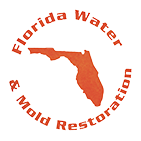Factors That Can Influence Mold Growth After Water Damage
After a flood, mold may swiftly develop in the wet, dark conditions that prevailed before the disaster. Since mold development after water damage is ugly and can cause several health problems, it is crucial to be aware of the conditions that might raise the danger of mold growth.
Here are factors that can affect mold development after water damage:
- Temperature
Since mold thrives in warm, damp places, temperature is a significant element in identifying the presence of mold. Temperatures that are too low will stifle mold development, while those that are too high will spur it on. Maintaining a calm, dry environment is crucial for avoiding mold formation.
- Moistness
Mold needs moisture to exist and develop. Hence, its presence significantly contributes to the conditions in which mold might spread. Reduce the humidity level as soon as possible after water damage has occurred to prevent mold growth.
- Airflow
Maintaining a dry atmosphere and decreasing the likelihood of mold spores settling in an area are aided by adequate ventilation, which is crucial for preventing mold formation. To avoid mold formation, ensure the room is well-ventilated and air can move freely.
- External Substances
Some surfaces are more conducive to mold development than others because of the substance used to create them. Since mold thrives in damp, dark places, it’s essential to dry out porous materials like wood and drywall promptly after a flood or other water disaster.
- Time
The time that elapses from the first water leak to the appearance of mold is also a factor. It is vital to respond quickly to limit mold growth since the longer the water damage is ignored; the more time mold has to settle and spread.
- Oxygen
Mold cannot flourish without enough oxygen levels. Mold cannot grow and thrive if it is deprived of oxygen. Mold may rapidly become an issue when exposed to oxygen.
- Light
Since mold requires a dark environment to thrive, it is most commonly found in basements and storage closets. Dimming the lights in these spots helps cut down on mold development.
- Water
Mold needs water to develop so that it can make its digestive enzymes. Mold can only grow when it has access to water. Mold spores can germinate and spread to other areas of a damp surface, creating new mold colonies.
Conclusion
After experiencing water damage, the likelihood of mold growth depends on several factors. The pace at which mold grows can be affected by temperature, humidity, airflow, surface material, time, oxygen, light, and water. Knowing what causes mold development after water damage might help prevent it and keep your home or business healthy and safe. To prevent mold from spreading, it is crucial to keep the space dry and well-ventilated and to fix any water damage that may have occurred promptly.
Don’t delay if mold is a problem in your house. Florida’s leading mold inspection service is Florida Water & Mold Restoration. Our expert team will thoroughly inspect the root of the issue and devise a plan to eradicate it. If you’re ready to get water damage restoration services Florida, contact us now.
